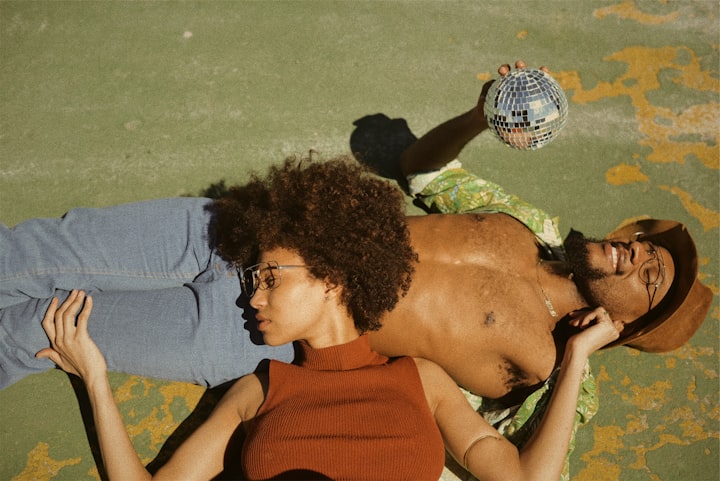Fashion as a Driver for Change
Fringe cultures, progress, Vogue and McCracken

Fashion, photography, and the arts, in general, have long been used by fringe (or ex-fringe) cultures to express themselves and effect change.
For far too long, fashion has likewise been monopolised, which has resulted in little more than inequity. Body shaming, whitewashing, and a whole lot more. However, things can and must change. And, perhaps, this transformation is already underway.
I've lately begun watching Tyler Mitchell's Masterclass.
The strength he earned and exuded through his creative expression touched me in the first lessons (I literally just saw them today). Tyler speaks about chronicling the wonderful parts of black adolescence through images and films, as well as the less favourable events that can't be ignored. He represents black ladies and men in everyday life, which is typically pleasant or ideal. Life in the open air, life in community, life in youth. The New York Times reported on one of his shows as a catalyst for change:
Challenges the art historical renderings of leisure time as the purview of the white gentry.
Is Fashion a Force for Change?
Many people's concerns have been focused on cultural, gender, and sexual inequalities, as well as climate change, in recent years.
I stopped for a second yesterday when going through Emporium, a retail centre near my house, to admire the magnificent large images of black women athletes that covered the Nike store. The tagline on the ad was something along the lines of The new role model. It was fantastic. Keep in mind that I am a white European lady living in Australia as a white-gay woman. I don't claim to comprehend black women's struggles or the long-term repercussions (hopefully beneficial) of advertising like this.
I do understand their power though, and the need we have for all kinds of representation. Researching about Nike as a driver for change, I also found this ad:
Now I have something to add. Some corporations or organisations may not be honest in the reasons they choose to encourage change with their marketing, whether it's due to cultural origins, gender, or environmental effect. To put it another way, for many, it might just be a marketing ploy. As a result, the issue becomes: is representation always beneficial?
I'm afraid I don't have an answer for you. Or, to put it another way, I believe that diverse representation is always beneficial. I'd simply want to add that we should take responsibility for ourselves and conduct our own research. Yes, the pride flag on every company in June is nice and necessary, but let me look into whether or not this particular brand supports LGBTQ people. And so forth.
One thing is sure. For fashion to be able to not go back to promoting only one type of world, there is one thing that will always be needed: your opinion. And how do we, the consumer, express our opinions? Well, when possible, through what we buy and what we don’t buy. Change with big-fashion houses can only happen when we support inclusive brands more than not-so-inclusive ones, or when we decide to ask for and pay for sustainable clothing. Big companies have to change, but it also depends on us.

Sustainability as a Case
Fashion, particularly rapid fashion, accounts for around 10% of all worldwide carbon emissions. Furthermore, it accounts for around 20% of all wastewater. Isn't that a little excessive? Is it just...too much?
Things are heading in the right direction. Programs are beginning to assist customers to become more conscious of the origin and impact of their purchases, for example ( programmes like Better Cotton Initiative and Global Organic Textile Standard for example). Several firms are also beginning to develop and market environmentally sourced fabrics and recycled apparel. So, things are progressing, but there is still a long way to go...
Fashion Plays a Huge Role in Creating Culture
Why should fashion be responsible for promoting change? Because, intrinsically, it promotes culture.
In consumeristic terms — and in the terms of Grant McCracken —, culture is the blueprint on which our lives are constituted. This constituted life/culture is defined by perceived categories (think gender, age, socio-economical status, race, etc) and principles ( think of the traditional concept of: women are delicate and ladylike).
Consumer items are used to transmit this blueprint to us. Clothing, or anything else for that matter...
Now, two things are required for this transfer to take place: advertising and fashion. Of course, we'll concentrate on the second.
As a result, fashion has been entrusted with the task of linking cultural categories with styles and meaning. Consider how we may link fashion to subcultures throughout history: the hippy movement, punk-metal (or more "emo" when I was a teen...), and the LGBTQ+ community.
And while according to McCracken cultural meaning flow from fashion to us (maybe through some opinion leaders), I believe that now more than ever, things can change from us to fashion.
In short: let’s make our dollars be heard, and drive together with fashion, change. For the better of course.








Comments
There are no comments for this story
Be the first to respond and start the conversation.